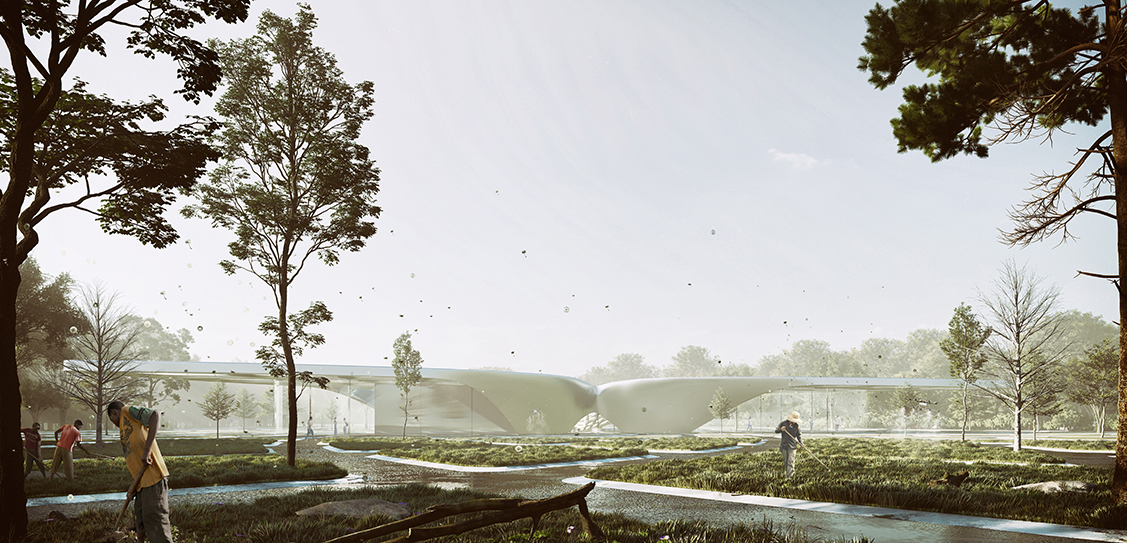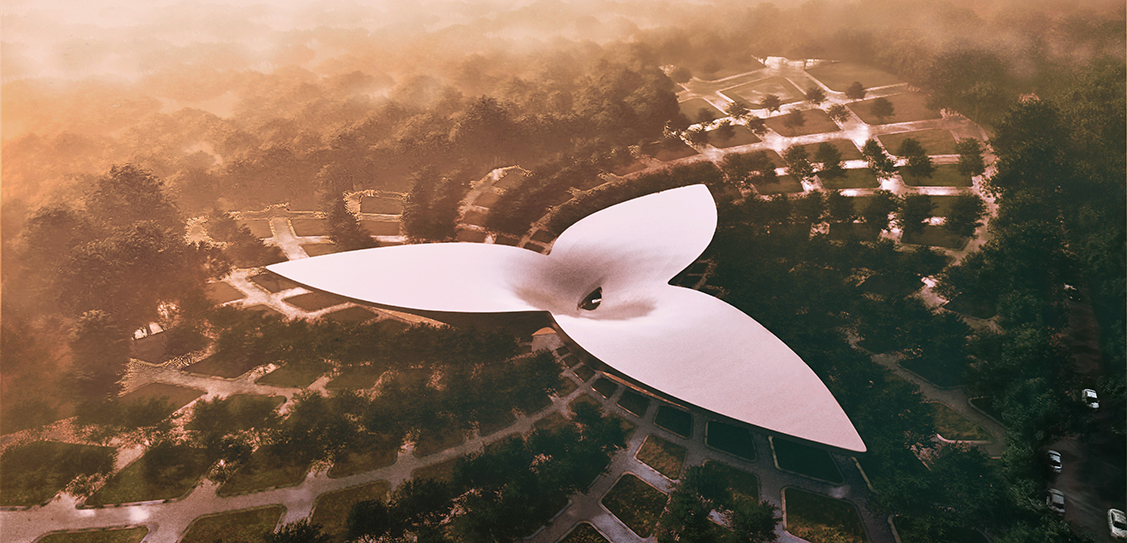Kannauj, also known as the “perfume capital of India” has been a perfumery town for thousands of years. This project has a single focus of promoting this age old tradition along with giving a high degree of visibility to the city of Kannauj.
Perfume Park and Museum is spread over 41.55 acres along the sixth lane of the Lucknow-Agra expressway. The design brief focuses on the development of flower beds, perfume museum along with shops and a cafe, skill development centre and distilleries. It is an amalgamation of interaction cum leisure space.
The design looks at reflecting the essence of a perfumery, thereby imbibing the underlying principle of a flower, to create a project that is reminiscent of flowers but not a literal translation. The Fibonacci series was looked upon as the design principle with the museum being the focal point of the development radiating out into the flower beds. One base grid where the volumes and flower beds emerge to create a seamless experience and a fluid circulation. The spiralling nature of this mathematical pattern creates radiating paths leading to the museum.
As the pattern exponentially becomes bigger, it radiates away from the centre providing an opportunity for flower beds next to the museum, and bigger sized plots at the edges, which are used for greenhouses and distilleries within the same system.
The museum building is designed as a flower with three petals. These three wings accommodate a museum, the second wing an auditorium and workshop area and the third wing a souvenir shop along with a cafe. A movement loop is provided in the building along the periphery so visitors are not missing out any area also ensuring view of the perfume park from the inside. A generous cantilever has been given in the roof with the pattern of the flower beds projected on the ceiling of the roof. This creates a fuzzy boundary condition which lets the view extend into the flower beds of the perfume park and blends the landscape with built.
The museum roof dips down in the centre allowing visitors to access the roof. This creates a vantage point for visitors to look over the flower beds radiating out and creating a fluid design.
Movement on the site is directed towards the perfume museum creating it as the focal point of the complex so visitors are drawn towards the building. The base grid creates the flower beds and extends into the museum creating an interaction between the building and landscape.
Green houses have controlled humidity for certain species of flowers that need extra care to live throughout the year. The skilled development centre will support a knowledge exchange between experts from Grasse and Kannauj. Also there are distilleries to actually produce the fragrances on site.
Heat gain analysis was done to optimise the depth of the cantilever to ensure minimum heat gain on the façade of the museum itself, resulting in reduced cooling loads.



